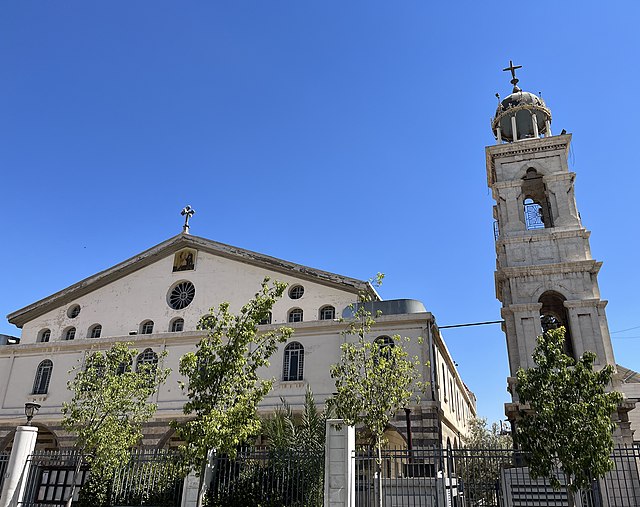Greek Orthodox Patriarchate of Antioch
The Greek Orthodox Patriarchate of Antioch, also known as the Antiochian Orthodox Church and legally as the Rūm Orthodox Patriarchate of Antioch and All the East, is an autocephalous Greek Orthodox church within the wider communion of Eastern Orthodox Christianity that originates from the historical Church of Antioch. Headed by the Greek Orthodox patriarch of Antioch, it considers itself the successor to the Christian community founded in Antioch by the Apostles Peter and Paul. It is one of the largest Christian denominations of the Middle East, alongside the Copts of Egypt and the Maronites of Lebanon.
Mariamite Cathedral, Damascus, Syria, headquarters of the Greek Orthodox Church of Antioch since 1342 AD, with the 'Umariyya Minaret at the front, to the right
Patriarchatus Antiocheni, 1640, by Melchior Tavernier
Church of Saint Peter in Antioch
Rūm, also romanized as Roum, is a derivative of Parthian (frwm) terms, ultimately derived from Greek Ῥωμαῖοι. Both terms are endonyms of the pre-Islamic inhabitants of Anatolia, the Middle East and the Balkans and date to when those regions were parts of the Eastern Roman Empire.
A view showing several floors of an underground Rûm city in Turkey.
A Rûm architect from Konya built the Gök Medrese (Celestial Madrasa) of Sivas while it was a capital of the Sultanate of Rûm.
Abandoned Rûm churches carved into a solid stone cliff face, Cappadocia, Nevşehir/Turkey.






